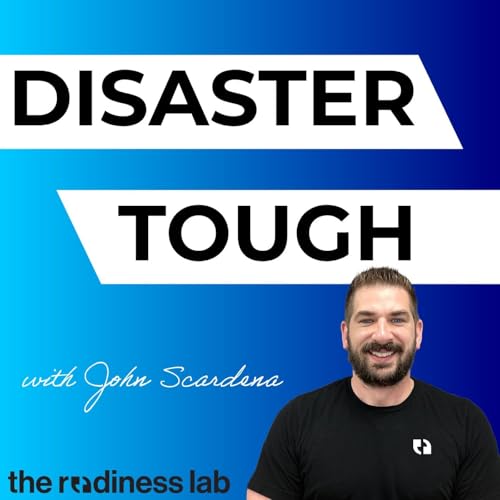Looking for more DTP Content? Check us our here: www.thereadinesslab.com/dtp-links
In this episode of the Disaster Tough Podcast, host John Scardena sits down with Juliette Murphy, CEO and co-founder of FloodMapp, to explore how cutting-edge technology is transforming flood forecasting and disaster response.
Juliette shares her journey from water resource engineering in Australia and Canada to building a company dedicated to giving emergency managers and communities faster, more accurate, impact-based flood intelligence. Drawing on real experiences from disasters like the 2011 Brisbane Floods, the 2013 Calgary Floods, and the Queensland floods of 2022, she explains how early warning systems often fail survivors — and how FloodMapp bridges that gap.
The conversation breaks down the complex science behind meteorology, hydrology, and hydraulic modeling — the three layers needed to predict where floods will hit, how deep the water will get, and what communities, infrastructure, and lives will be impacted. Juliette also highlights how debris flows, wildfire burn scars, and contaminated floodwaters pose unique risks, and how new data sources — from drones to social media — can be used to calibrate and validate models in real time.
John and Juliette also discuss real-world challenges: why agencies sometimes rely on gut instincts in the absence of data, how false alarms affect public trust, and why risk management (not perfection) is the right framework for evacuation and emergency decision-making. With case studies from Oroville Dam, Hurricane Harvey, and more, Juliette shows how better models can prevent loss of life and reduce long-term recovery costs.
👉 Tune in to hear how FloodMapp is helping emergency managers move from static flood maps to dynamic, operational decision support — giving communities hours of advance notice, saving lives, and protecting critical infrastructure.
You can learn more about FloodMapp here: https://www.floodmapp.com
Major Endorsements
Impulse
Bleeding Control Kits by Professionals for Professionals
https://www.impulsekits.com
Doberman Emergency Management
Subject matter experts in assessments, planning, and training
https://www.dobermanemg.com
The Readiness Lab
Trailblazing disaster readiness through podcasts, outreach, marketing, and interactive events
https://www.thereadinesslab.com
For Sponsorship Requests
contact@thereadinesslab.com
314-400-8848 Ext 2
#Flooding #DisasterResponse #EmergencyManagement #ClimateChange #FloodForecasting #PublicSafety #Hydrology #UrbanResilience #Resilience #DisasterRecovery #HomelandSecurity #CrisisManagement #ClimateTech #InfrastructureProtection
Show More
Show Less
 Oct 2 202530 mins
Oct 2 202530 mins 23 mins
23 mins Sep 25 202535 mins
Sep 25 202535 mins 33 mins
33 mins Sep 16 202543 mins
Sep 16 202543 mins 52 mins
52 mins 1 hr and 11 mins
1 hr and 11 mins Aug 12 202544 mins
Aug 12 202544 mins

